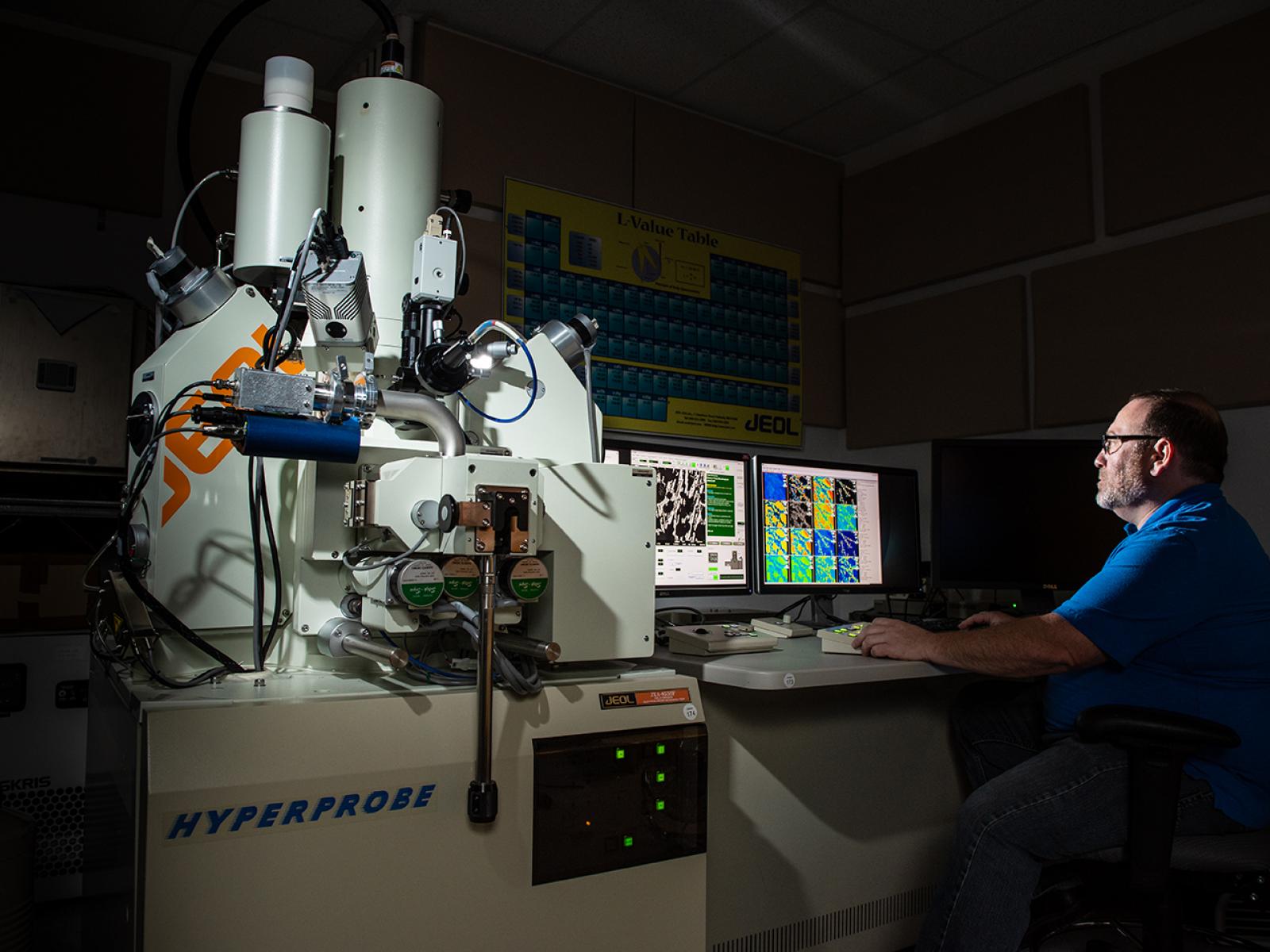JEOL JXA 8530F Electron Probe Microanalyzer
Located in APEL | Stewarded by Joshua Silverstein and Jarrod Crum

The JEOL JXA 8530F EPMA is an advanced, high-resolution EPMA, or microprobe. This instrument is designed to make quantitative measurements of the elemental composition of specimens at sub-micron length scales.
Andrea Starr | Pacific Northwest National Laboratory
Mission
The JEOL JXA-8530F Plus field emission gun electron probe microanalyzer (EPMA) provides enhanced analytical and imaging capabilities for analysis of inorganic materials. This non-destructive approach supports quantitative elemental analysis of micron sized features in bulk samples and sub-micron features in thin samples (transmission electron microscopystyle). The instrument is supported by a vast set of microanalysis calibration standards. The wavelength spectrometers are equipped for parts per million sensitivity of trace elements and are capable of measuring elements with atomic mass ≥ Be. This tool is commonly used to study various inorganic materials including geological, ceramic, metal, and glass. This tool can produce quantitative elemental analysis and elemental maps of multiphase materials.
Features
- In-lens Schottky plus field emission gun
- Secondary and backscatter detector
- Advanced quantitative mapping software
- Five wavelength-dispersive spectrometers (WDS)
- Combined WDS/ Energy-Dispersive X-Ray Spectroscopy analysis system
- Cathodoluminescence spectrometer system
- Probe for EPMA data collection and analysis software
Related publications:
Jarrod Crum, Saehwa Chong, Jacob Peterson, Brian Riley. 2019. "Syntheses, crystal structures, and comparisons of rare-earth oxyapatites Ca2RE8(SiO4)6O2 (RE = La,Nd, Sm, Eu, or Yb) and NaLa9(SiO4)6O2." Acta Crystallographica, E75, 1020-1025.